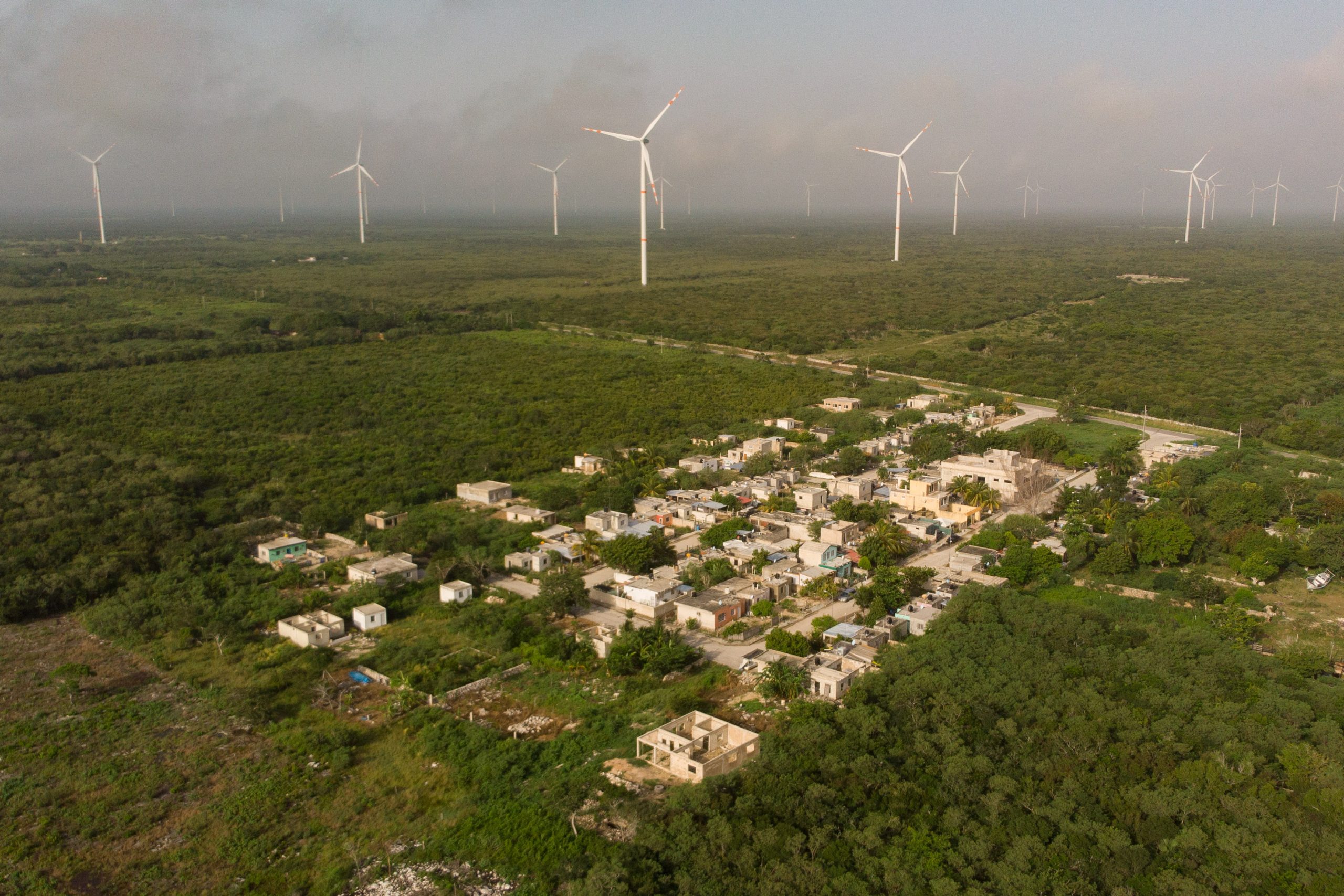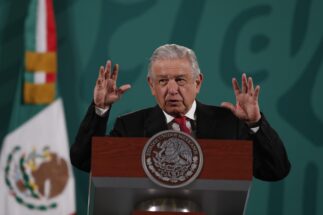Last September, Mexico’s president, Andrés Manuel López Obrador – popularly known as AMLO – presented a controversial proposal to annul the 2013 energy reform introduced by his predecessor, Enrique Peña Nieto.
That law allowed private and foreign companies to participate in the energy sector alongside state entities for the first time in almost 80 years.
AMLO’s proposal for the Electricity Industry Law, which the Mexican senate will vote on in the coming months, would see the public sector take back control of planning, concentrating the generation and commercialisation of energy in the hands of the state-owned utility, the Federal Electricity Commission (CFE). It forms part of his government’s broader plan to achieve energy independence in the coming years.
However, the reform has attracted widespread criticism. Opponents are fearful of the creation of a state-run energy monopoly, and the law appears to prioritise fossil fuels and stunt the nascent growth of renewables – something that private companies have largely driven. This also potentially threatens Mexico’s climate commitments.
So why is AMLO campaigning to reassert state control over Mexico’s energy sector and what implications does it have for the economy and climate?
Why the counter-reform?
AMLO has said that Mexico’s oil does not belong to the government, nor the state, but “to the people”. He has been called a “resource nationalist” in the shape of former populist leaders Lázaro Cárdenas and Adolfo López Mateos, who nationalised state energy company Petróleos Mexicanos (Pemex) in the 1930s, expropriating it from Anglo-Dutch owners Shell.

AMLO rode to a landslide election victory in 2018 on a wave of public anger at Peña Nieto’s perceived failure to clamp down on corruption, including at Pemex following its privatisation in 2015, which was a pillar of the former president’s energy reform process. Peña Nieto himself has since been accused of corruption by Pemex’s former president Emilio Lozoya, who remains in pre-trial detention for his dealings with disgraced Brazilian infrastructure giant Odebrecht. Peña Nieto has not responded to the allegations.
Mexico’s current practice of importing its own oil, having been refined overseas, is like selling oranges to foreign markets and buying their orange juice, AMLO has said. For this reason, he is revitalising six of Mexico’s oil refineries and investing in a new one, Dos Bocas.
He has blamed the country’s failure to retain added value in the oil sector on “the corrupt technocratic mentality” that prevailed among political decision-makers for 40 years.
What does AMLO’s reform propose?
AMLO’s proposal is based on three main premises: empowering the CFE as the sole seller of energy to end users; privileging the energy generated by the CFE in the electrical system over that of private companies; and centralising activities such as planning and directing the energy transition within the state company.
Empowering CFE: Currently, the CFE is the only electricity provider for small- and medium-sized energy consumers. This includes individuals and small businesses. Large consumers, such as industry, however, have the possibility of buying energy from other providers, including those generating renewable energy. If the CFE becomes the sole seller of energy, large consumers will no longer have the option of generating their own energy or buying it from private producers. As things stand, independent energy producers contribute approximately 27% to Mexico’s total national electricity supply, while self-supply represents 15%, according to CFE data.
Centralisation: Centralising activities also has important political and legal implications. Today, the Energy Regulatory Commission (CRE), which was strengthened by the 2013 reform, acts as arbiter of the sector, controlling activities such as generation, transmission and distribution, along with the transportation, storage and distribution of oil and gas.

With the current reform, the CRE would cease to exist as an independent body and would be subsumed under the Secretariat of Energy (the relevant ministry). The National Centre for Energy Control (Cenace), which guarantees national electricity dispatch and rates, meanwhile, would be incorporated into CFE.
According to former CRE commissioner, Montserrat Ramiro, this would make the state company self-regulating: “The state already has leadership through various instruments, such as regulators, which can ensure the interests of consumers in the long term. Centralising everything in CFE takes away leadership from the state,” he said in a recent interview.
Such an institutional arrangement would also violate the terms of the United States-Mexico-Canada Agreement (USMCA), which guides North American economic policy.
Dispatch: The reform also seeks to change the way the wholesale market dispatches the energy that the CFE and private companies generate. Currently, the main criterion is price: the cheapest energy is favoured. Among the cheapest sources of electricity are privately run wind and solar farms. As it is generated mostly by oil and coal, CFE’s electricity is more expensive and loses out.
With the proposed reform, CFE’s hydroelectric, coal-fired power and the country’s only nuclear power plant would be prioritised in energy dispatch, along with thermoelectric, which in Mexico mostly operates with fuel oil – a residual product from oil and coal refining, both of which are highly polluting and harmful to human health. This is despite their costs being higher. Renewables, then gas, would follow. Consequently, the CFE would control 54% of the electricity market and private corporations, 46%.
What are the climate implications of the reform?
Critics say AMLO’s reform would bring about negative environmental consequences, greater pollution and burden the state with the costs. There is also the risk of affected companies filing million-dollar international arbitrations as a result of the policy change.
“What is problematic now is believing that the discussion is whether it [energy generation and supply] is public or private. The problem is the solutions proposed by the reform,” said Pablo Ramírez, a specialist in energy and climate change at Greenpeace Mexico.
“There are many contradictions that are problematic. The reform is ambiguous and leaves room for discretion in many aspects. They have a worrying conceptual confusion between what is clean and what is renewable, between security and sovereignty,” he added.
Under the proposed model, the carbon dioxide emissions emitted by Mexico’s energy sector would hit 1 billion tonnes by 2050, more than double the 486 million tonnes projected under existing laws, according to a study carried out by the German Institute for Economic Research.
They have a worrying conceptual confusion between what is clean and what is renewable, and between security and sovereignty
Those figures suggest that Mexico would fail to meet its own voluntary pollution reduction goals set out in the 2015 Paris Agreement on climate change.
Furthermore, in order to keep electricity prices low, as the government has promised, subsidies for almost half of CFE’s customers would need to increase.
But in terms of costs, an analysis by the non-governmental Mexican Institute for Competitiveness (IMCO) calculated that, to guarantee the generation of its target of 54% of electricity between 2022–2028, CFE would have to spend between US$19.7 billion and $24.8 billion dollars in that timeframe. This means a massive increase on the $4.5 billion CFE currently spends buying energy from private companies to satisfy demand, which grows about 4% annually.
As a result of AMLO’s counter-reform, electricity subsidies would rise by 13%, from the nearly US$3.3 billion dollars established in the 2022 national budget to approximately $3.7 billion, according to the Centre for Economic and Budgetary Research.
CFE rejects these projections and claims, without evidence, that the reform will not harm the environment and would mean million-dollar savings for the country.
What does reform mean for renewables?
Mexico’s energy transition has been stalling since 2019, as the government suspended electricity auctions organised by Peña Nieto. Under these, private companies offered low-cost energy sales and the construction of wind, solar, or geothermal power plants.
These opportunities attracted large investments between 2016 and 2018 and led to low generation costs. However, there were also alleged human rights violations in communities where wind and solar farms were installed.
Last January, electricity generation based on fossil fuels accounted for 76.4% of the total mix, followed by wind power (7%), hydroelectric power (6.66%), solar photovoltaic (4.4%), nuclear (3.87%), geothermal (1.55%) and biomass (0.07%) according to the Mexican Energy Transition Observatory.
The sector’s path is being traced for the coming decades, chaining the country to a broken model of refineries, gas pipelines and hydroelectric plants
Nor does the new government plan encourage alternative forms of electricity generation, such as through cooperatives or community companies.
“Maintaining cheap electricity goes against environmental policy, because the transition we need requires a reduction in consumption,” said Israel Solorio, a researcher from the public National Autonomous University of Mexico (UNAM). “Cheap energy does not contribute to the idea of energy transition.”
Ramírez criticised AMLO’s lack of a long-term vision. “The path of the sector is being traced for the coming decades, and that is the most worrying thing. We are chaining the country to a broken model of refineries, gas pipelines, hydroelectric plants. The measures contemplated do not help at all and have very important limitations,” he said.
Will the energy reform go through?
Mexico’s congress approved the Electricity Industry Law in February 2021, with 289 votes in favour, largely from AMLO’s Morena party, and 152 votes against, including from the National Action Party (PAN) and the Institutional Revolutionary Party (PRI), the two largest opposition parties.
The senate vote on the law is expected soon after public consultations on the reform close on 28 February. AMLO recently undertook a national tour seeking to explain the law to Mexicans and promote its supposed benefits.
Despite his best efforts, the government’s success is by no means guaranteed. Morena and its allies lack the presence in the senate to ensure the passage of the law. However, AMLO’s determination to oversee the reform could mean pushing it through by other, unilateral means.








